What are clay pots and how to choose them?
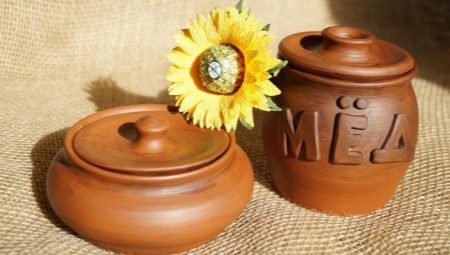
Since ancient times, the clay pot has served people, playing the role of utensils for cooking, storing food and using it for household purposes. Dishes that are cooked in earthenware have a unique taste, juiciness and aromatic smell, and also retain all the useful properties of food.
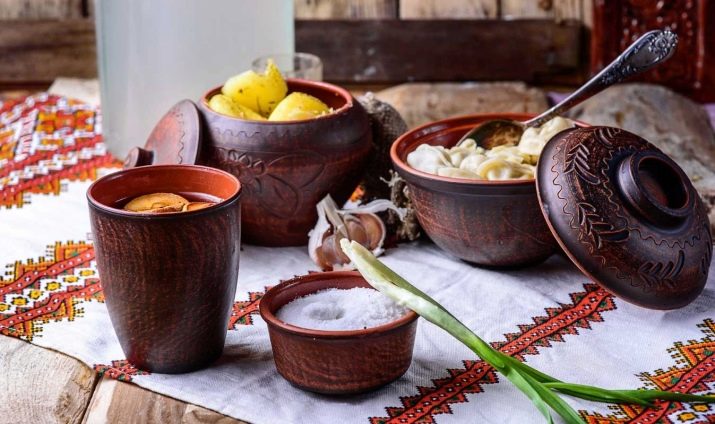
Advantages and disadvantages
Over the long history of using clay as a material for creating dishes, the technology of its manufacture has improved significantly. Ceramic cookware has become more durable and has a modern look.
Among the unambiguous advantages of the material, the following facts can be noted:
- environmentally friendly material, natural raw materials in the composition, which is important for kitchen utensils;
- resistance to high temperatures;
- porous structure that allows air to pass through;
- the ability to keep a certain temperature for a long time;
- does not change the taste of the prepared dishes;
- moisture resistance and ability to withstand chemical attack.
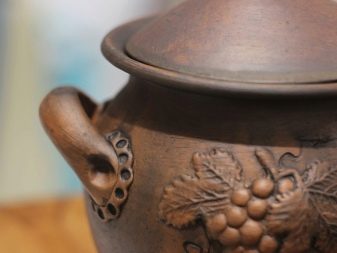

The pots can have any style of decoration, and from the wide range of products presented, you can choose an option that suits the taste of almost every person. Clay products are better than ceramic ones in that they are more functional and do not block the pores of red clay. They are often used in everyday life, in the kitchen (they are used to cook dishes according to various steamed recipes).
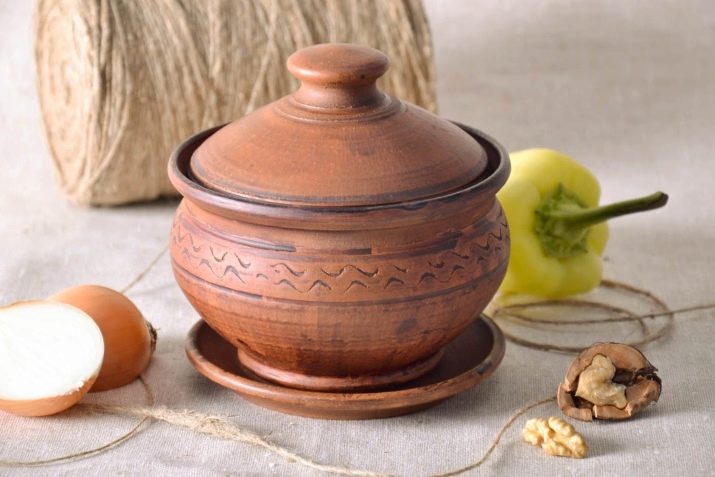
However, traditional pottery ceramics have some disadvantages, due to which this material is inferior to other materials for making tableware:
- fragility and the need for respect;
- difficulty in the maintenance process, caused by the need for careful cleaning of the pot in order to avoid damage to the glazed coating;
- special requirements under operating conditions: earthenware must not be cooled or heated too quickly; it is also not recommended to cook in pots over an open fire;
- unglazed pots have the ability to strongly absorb moisture, which, at low temperatures, can provoke the formation of cracks on the walls;
- the property of absorbing unpleasant odors that are very difficult to remove, so the pottery is not suitable for storing strong-smelling products;
- large weight of the product, which greatly complicates the transportation process.


Manufacturing features
The shape of the pot, developed by potters many centuries ago, has survived to this day. The design of the product is designed for uniform heating of dishes from all sides. From time immemorial, clay pots were molded by hand, without resorting to technical devices.
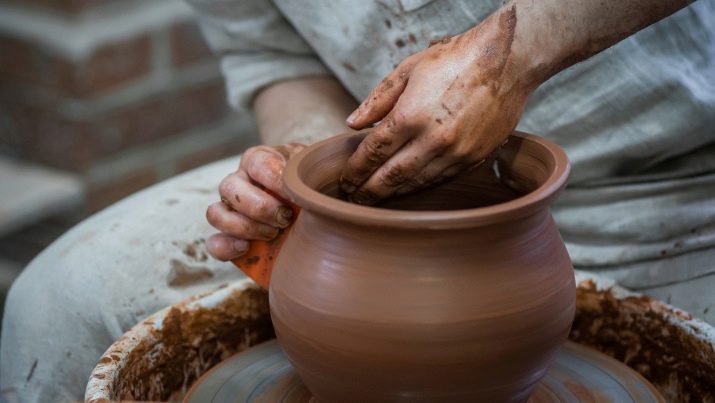
Such kitchen utensils were ideal for cooking in a Russian oven.

Earthenware is considered to be one that has passed the procedure of a single firing and does not have additional additives and coatings in its composition. The firing temperature is usually over 7000 degrees. Pots are made on a potter's wheel, they have a matte monochromatic structure.
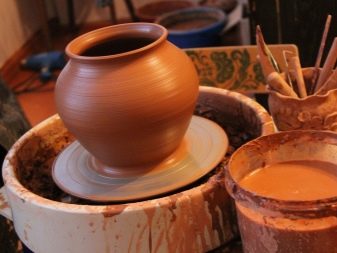

After firing, the surface of the products is covered with glaze, if you want to get a glazed pot.

Description of species
Much effort is not required when preparing food in a glazed clay pot.
If the product is glazed inside and from all sides, then it does not need to be pre-soaked in water.
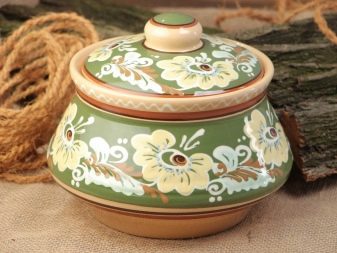
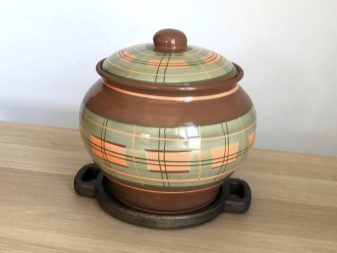
Baking pots that have not been glazed will soften the food as they are steamed for a long time in their own juice. They are used, observing all the rules for the care of earthenware.
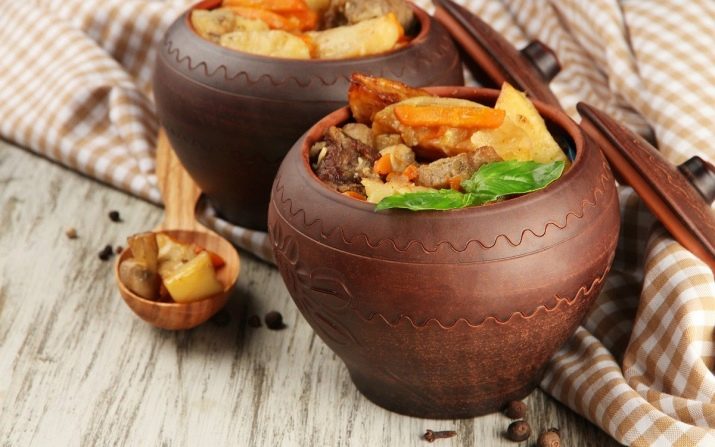
Ceramic cookware differs from earthenware in the material used, which may include mineral additives. Also, the difference lies in the production technology and the duration of the firing. For clay pots that have a simple shape, the stamping method is used, which allows you to get beautiful pots with even outlines of the same size.
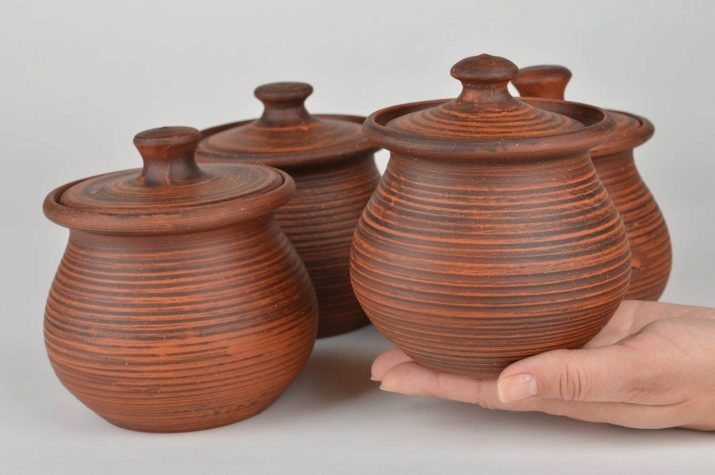
Ceramic products are made from inorganic materials that have been hardened by high temperatures and subsequent cooling.
In appearance, clay pots often resemble ceramic containers.
Ceramic pots can have a variety of colors; decor is usually applied to their surface in the form of drawings. They have a more durable structure compared to clay products, but they are also afraid of a sharp temperature drop.
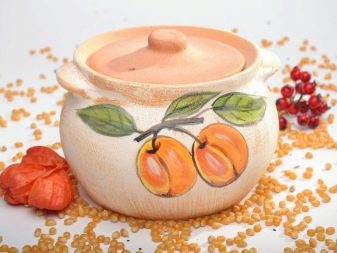

By appointment
Clay is an environmentally friendly material, and foods stored in such dishes retain their nutritional properties longer. This clay pot is suitable for storing dairy products, cereals, fruits, vegetables and more.
Bulk products in clay containers are not threatened by bugs.


The pot is considered a great option for storing baked milk, cheese, or cottage cheese. Food in it will stay fresh for a long time, being in a cool place.

For vegetables, there are special clay containers that have ventilation holes. You need to store vegetables by covering the dishes with a lid, this technique will help them not start to rot for a long time. A similar container is also suitable for potatoes, because air will circulate in it.

For honey, you can use containers made of processed clay. In such a dish, a sweet treat will retain vitamins and taste for a long time.


This utensil is also very fond of gardeners who use it on their site. For the garden, clay pots can be a wonderful decoration and place for planting flowers.
There should be drain holes at the bottom of the container and a pallet must be attached.
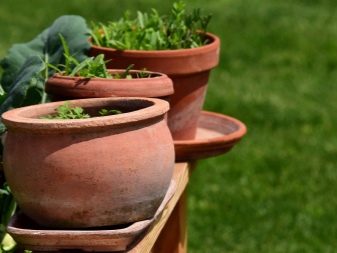

In addition, the ability to pass air has a beneficial effect on the root system. The only drawback of using a clay pot outdoors is its fragility.

By shape and size
Clay products also differ in these parameters. However, all containers have a traditional configuration and have a narrowed neck. There are handles on the sides of the rounded pot. Also included is a lid designed to close the neck tightly.
Also, thanks to such models, there will be fewer problems with the subsequent washing of the oven.

For cooking, it is better to choose pots with a wide neck and round shape.

For flowers, you can also use unusual patterns: in the form of a triangle or a trapezoid.


Product volumes vary. You can find models from 200 ml to 30 liters, those smaller than 700 ml are used as tableware, and the larger ones are used for storing food and preparing large portions.

Selection Tips
Before buying a clay pot, you need to determine its purpose. Based on the purpose of use, the desired shape, size and volume of the product are selected. The vessel should be carefully examined for scratches, chips, cracks and other defects.
It is worth making sure that the thickness of the walls and base is the same, otherwise the pot will crack when heated.

It is equally important to check the integrity of the purchased clay product. To determine the firing quality, the pot is checked for its sound character. The sound you make should seem clear and clear.
The enamel coating should be uniform, on the external and internal surfaces - there should be no gaps and smudges. This is especially important during operation, since an ideal surface will be able to protect the porous texture from the penetration of fat particles, soot and moisture.
Pottery with intricate decorative elements will be difficult to wash and keep clean. If there is a cap, check that it fits exactly the neck.
The volume of a clay product is selected taking into account the size of the portions that will be prepared in it. In pots with a large volume, you can prepare a family meal for several people.

When choosing a container for planting indoor flowers, it is worth focusing on the diameter and height of the vessel. Based on the type of root system, it is necessary to select the right dishes, then the plant can develop and grow normally. For a fibrous root, it is preferable to take wide pots, for long roots - tall and narrow products.
Despite the relatively high cost, such pots are stable and promote the evaporation of excess moisture and provide an oxygen supply.

The stores offer a huge variety of shapes and design solutions, which, together with the beneficial properties of natural clay, prompts to give preference to clay pots instead of artificial analogs.


Application and care
It is not recommended to put cold clay pots in a preheated oven, as they can burst - the container should be heated at the same time as the oven. It is recommended to place the pots removed from the oven on a wooden support.
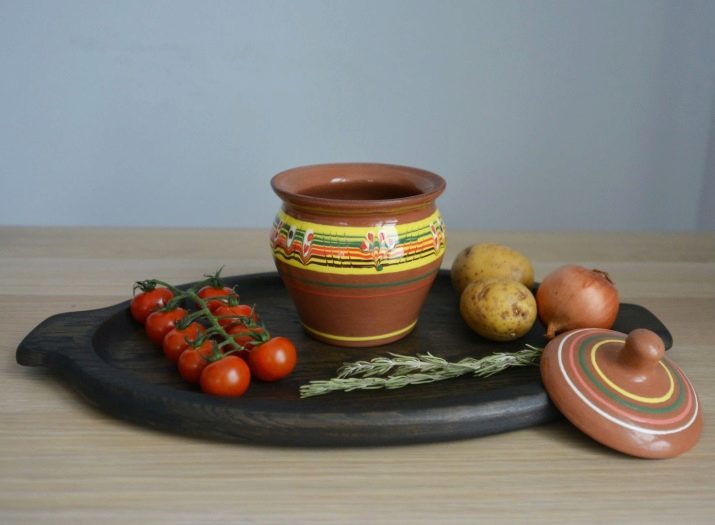
Dishwasher-safe pottery is considered controversial and depends on the coating. This unglazed earthenware container is designed for oven, microwave and oven use.
Only glazed dishes may be washed in the dishwasher.
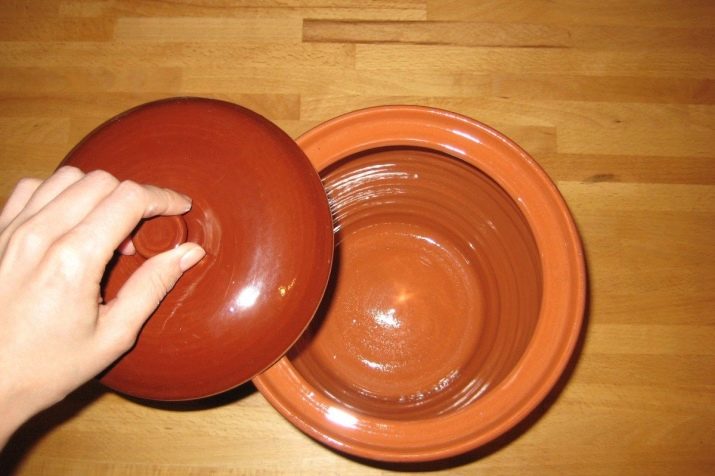
You can heat food in the microwave in any pots, except for products containing conductive paint on the surface, that is, gilding, as well as paint and varnish. Just in case, you can familiarize yourself with the rules for operating the microwave oven.
As for dishes with a lid, you can use an interesting tip - replace it with dough.Also, after baking, you get a delicious bread.
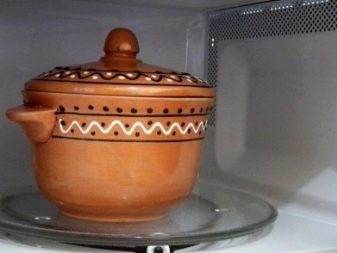
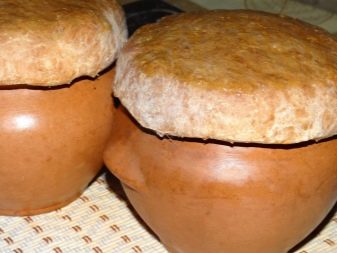
A dish in a microwave or oven may not be cooked to full readiness, but remove the pot in advance - in 7-10 minutes., because the strongly heated walls retain heat for a long time, and the food itself will reach the desired condition. To reheat food in a pot faster, you can stir the contents periodically.
If you want to place several clay vessels in the oven at once, you need to make sure that they do not touch.
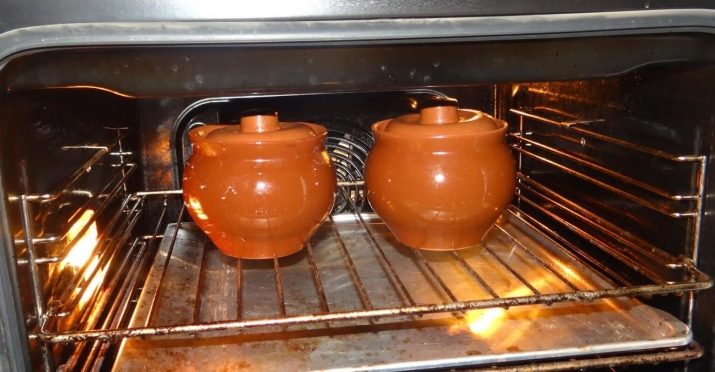
If the sides of the pot are not washed from fat, you should fill the container with cold water and add a small amount of vinegar to it. Then put the pot in a cold oven, gradually heating it up. After half an hour, the dishes will need to be removed and cooled. Next, the product is washed out and rinsed.
Handle dishes without enamel with extreme caution. During the washing process, do not use a wire brush, as it can damage the surface. Also, do not forget about the property of unglazed pots to absorb aromas, so it is not recommended to wash them with detergents that contain chemical fragrances. It is preferable to use unflavored soap.
Household chemicals can be absorbed into the pores of the pot, and subsequently released into food.
After washing, the pots must be completely dry, otherwise mold may appear inside the container.

It is necessary to store clay dishes in an open and dry place. You can do without adding oil or fat completely, or use very little of them.
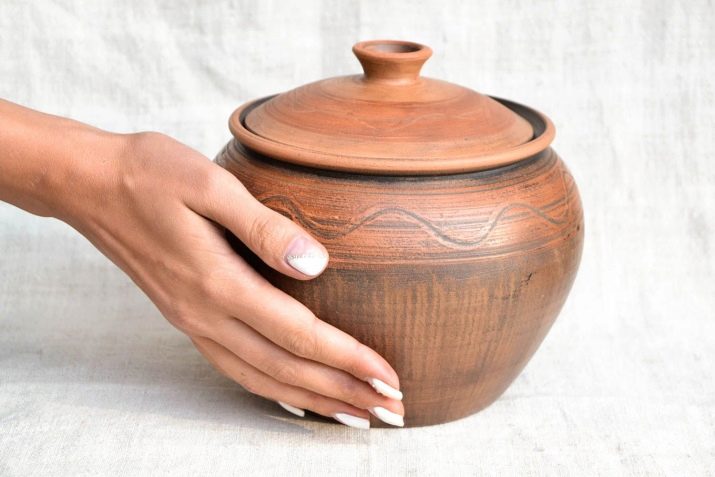
It is recommended to soak the purchased clay pot in a container with cold water for one to two hours, so it can be prepared for the first use. This must be done so that water penetrates into the porous texture of the clay and the vessel does not leak.
It should be borne in mind that unglazed clay perfectly absorbs foreign odors, so it is better to cook dishes of the same type in one pot. If you still had to put something fragrant in the pot, you need to put parchment paper inside.
If you want to decorate a clay vessel and give it an original design, you can paint it with acrylic paints and then cover it with an additional layer of varnish. The drawing depends entirely on the taste of the author and his imagination.




